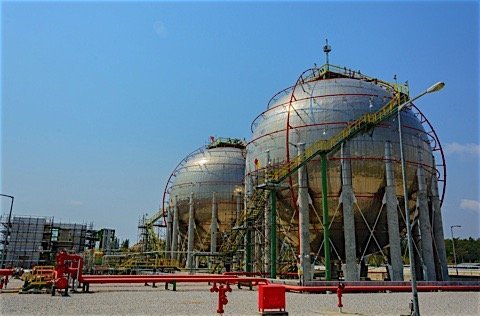
Canada’s natural gas producers want to see liquefied natural gas (LNG) replace diesel and other fuels in serving the energy needs of remote northern communities. Canada should expand the delivery of liquefied natural gas (LNG) to the nearly 300 remote communities and dozens of industrial facilities that are not currently connected to the electrical grid or to natural gas distribution pipelines. Doing so would give these communities access to affordable, clean energy and remove a major barrier to their economic development. Investing in LNG is the responsible way to develop Canada’s north, says a report from the Canadian Gas Association (CGA). It is the cleanest-burning fossil fuel and poses little risk to the environment.
Because of low prices for natural gas in recent years, LNG has emerged as an affordable alternative to the diesel and fuel oil that are currently used in many remote communities to generate electricity, states the report, Economic and GHG Emissions Benefits of LNG for Remote Markets in Canada. It claims to quantify the energy cost savings and greenhouse gas emissions reductions that would flow from converting power generation facilities to LNG.
The saving to customers over the twenty-five year study period is projected to be $2.4 billion. There would also be a $12.5 billion contribution to Canada’s GDP, with the creation of 118,000 net job years, and an increase of $4.5 billion in government revenues.
The reduction in greenhouse gas emissions would total 11.1 million tonnes of CO2, the equivalent of the annual CO2 produced by 2.3 million passenger vehicles.
Natural gas is the cleanest burning fossil fuel, and the adoption of LNG in remote communities brings several environmental advantages. LNG generation emits fewer GHGs than diesel generation, and nearly eliminates other forms of air pollution (SO2, NOX, CO, PM). The transportation of LNG is also very safe. As a liquid, LNG is not at risk of combustion and is held at a low pressure. In the event of a LNG spill, the LNG vaporizes, and there is no contamination or residual waste to clean up.

The current reliance on diesel to generate power in the North gives rise to many energy-related challenges, says the report, including high operating costs due to high volumes of fuel consumption, and the consequent high cost of energy. Fuel must also be shipped in over long distances. Burning diesel is also environmentally disadvantageous, creating “substantial” greenhouse gases and contributing to air pollution.
Getting LNG to the remote northern communities has also been a challenge until now, as Canada suffers from a general lack of liquefaction infrastructure. If LNG, like diesel, had to be shipped long distances to reach remote customers, the cost benefit would be largely lost. The report claims, however, that small-scale liquefaction plants can be “strategically” built in regions that are closer to demand but still served by natural gas pipelines.
The cost of the infrastructure necessary to provide new customers considered in the study with approximately 1.1 million gallons of LNG per day and 6.1 million gallons of storage capacity would be just over $2.2 billion. That includes new liquefaction plants, transport trucks, storage facilities, and other equipment. The net present value to all new customers, on the other hand, would be over $2.3 billion, the report estimates.


































